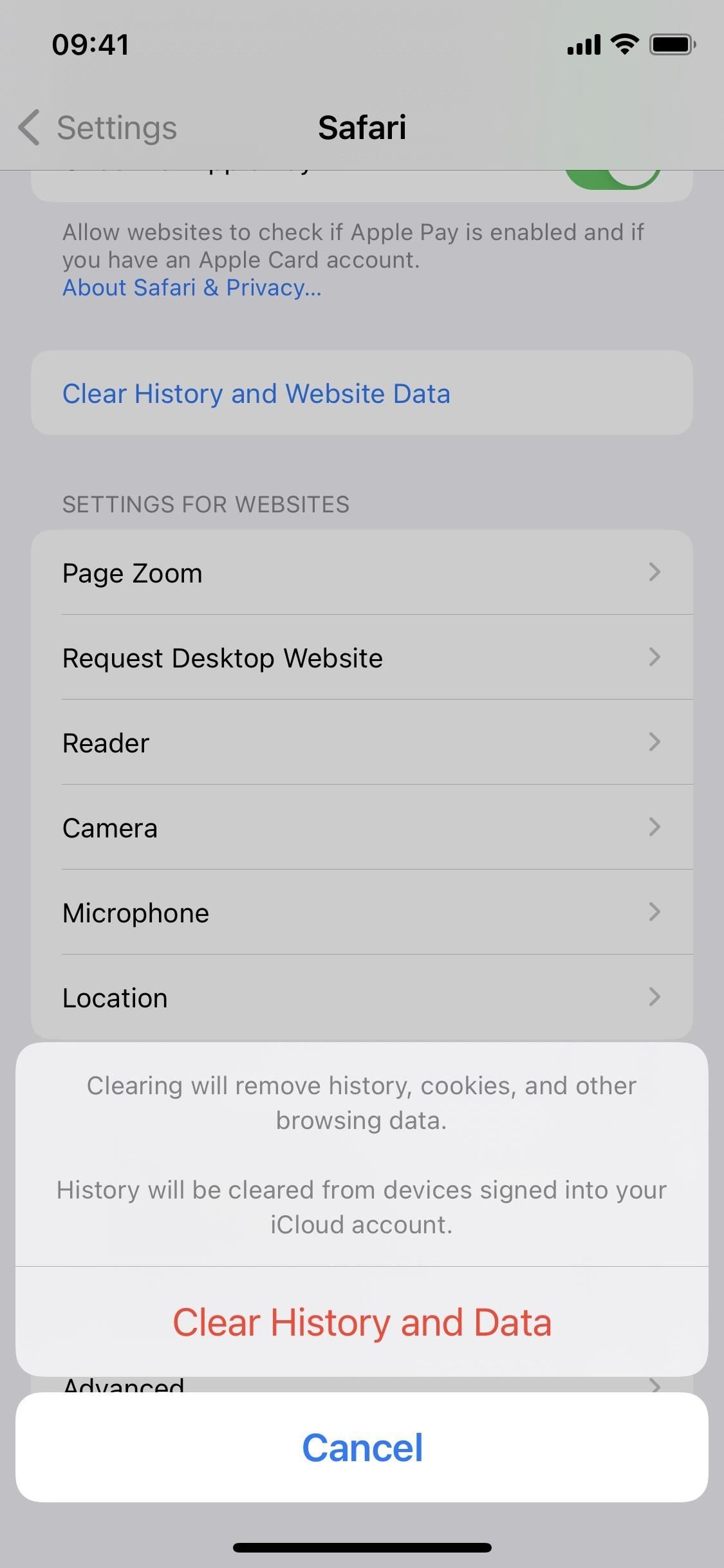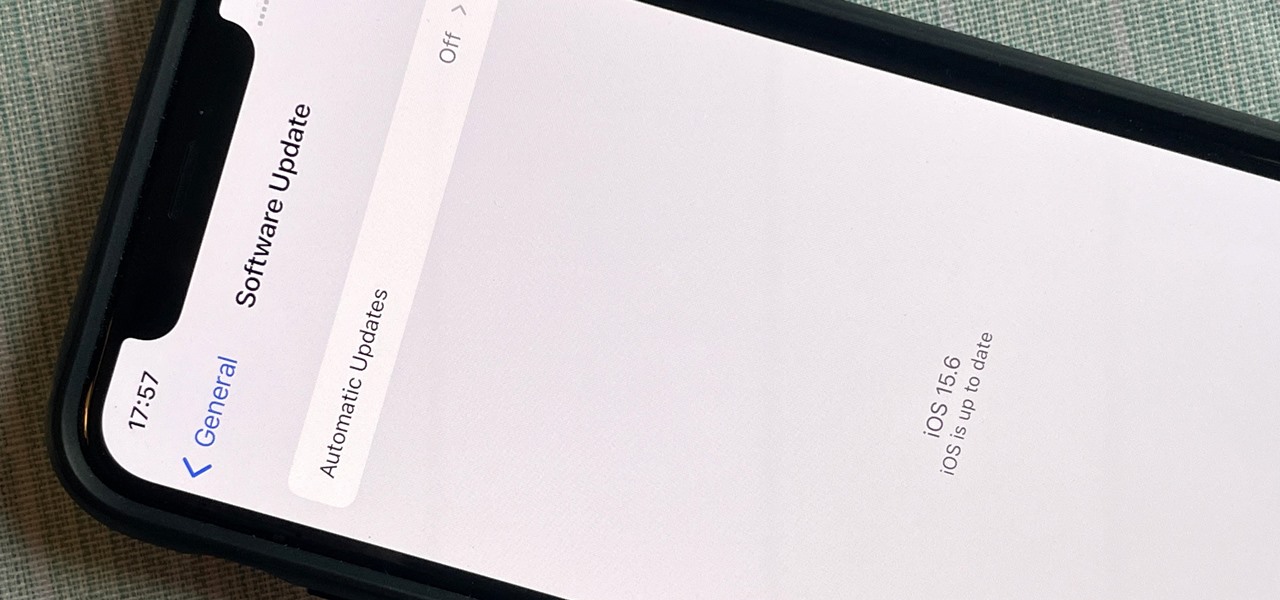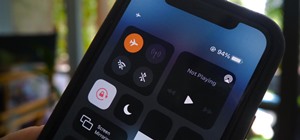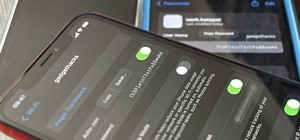After nearly two months of beta testing, Apple is finally pushing the iOS 15.6 software update to all iPhone users. While it's not as feature-rich as the iOS 15.5 or iOS 15.4 that came before it, there are still a few things you'll want to know about it.
The iOS 15.6 update was released to the masses on July 20 after five betas and two release candidates were issued to developers and public beta testers. The same applies to iPadOS 15.6, which has the same features listed below.
1. New Controls for Live Sports in the TV App
There's only one new feature that Apple acknowledges for iOS 15.6: a set of controls for live sports games in the TV app. With the new controls, you can pause, rewind, or fast-forward live sports coverage, as well as restart the whole broadcast so you can watch the game from the beginning.
2. Bug Fixes
Aside from the new TV controls for live sports games, the only other things Apple acknowledges for iOS 15.6 are some bug fixes:
• Fixes an issue where Settings may continue to display that device storage is full even if it is available.
• Fixes an issue that may cause braille devices to slow down or stop responding when navigating text in Mail.
• Fixes an issue in Safari where a tab may revert back to a previous page.
3. Clear Tabs When Clearing Safari Data
Usually, when you go to Settings –> Safari –> Clear History and Website Data –> Clear History and Data, your history, cookies, and other browsing data would just immediately disappear. In iOS 15.6, you may also be asked to "Close Tabs" or "Keep Tabs." This option is just for all your open tabs in the main "[#] Tabs" grouping, but custom Tab Groups will not be affected.



4. Improve Communication Safety
If you have a child in your family group, there's now an option via Settings –> Screen Time –> [Child's Name] –> Communication Safety that lets you "Improve Communication Safety." You can toggle that switch on if you want to help Apple improve the Communication Safety feature.
Help Apple improve Communication Safety by sharing analytics and usage data. Analytics and data are aggregated in a form that is not personally identifiable. No messages or media are shared with Apple.
If you've never opened the "Communication Safety" options, you may see a splash screen (left screenshot below) asking you to "Share With Apple" or "Don't Share" analytics and usage data. You may also see a notification on your child's Screen Time page asking to "Improve Communication Safety," which opens the splash screen seen below.



5. New Options for Incoming International Calls
Now, whenever you receive an international call from an unknown sender, iOS will label it as an international call and provide an option to report it as junk.
6. Upgraded Home Invitations Menu
In the Home app, invitations to join homes now have a space between them, as seen below. Also, there aren't any "Accept" buttons on your Home settings view. Instead, you'll see "View," which brings up a splash page with more information where you can accept or decline the invite.
Home's most significant update to the invitation process is a new "Report Junk" button for invitations sent from unknown senders, i.e., users not in your contacts. Before, you could just accept or decline invites from unknown contacts, but now you can view more info or report it as spam.


7. Over 35 Security Patches
There are also 37 security updates, and some of the big ones fix vulnerabilities with Home, Safari Extensions, Wi-Fi, WebKit, WebRTC, and Kernel. There's even a vulnerability with Software Update that would allow "a user in a privileged network position can track a user's activity. And one for iCloud Photo Library where "an app may be able to access sensitive user information." Here's a quick rundown to the issues iOS 15.6 addresses:
- AFPS: An app with root privileges may be able to execute arbitrary code with kernel privileges
- AppleAVD: A remote user may be able to cause kernel code execution
- AppleAVD: An app may be able to disclose kernel memory
- AppleMobileFileIntegrity: An app may be able to gain root privileges
- Apple Neural Engine: An app may be able to break out of its sandbox
- Apple Neural Engine: An app may be able to execute arbitrary code with kernel privileges
- Apple Neural Engine: An app may be able to execute arbitrary code with kernel privileges
- Audio: An app may be able to execute arbitrary code with kernel privileges
- Audio: An app may be able to disclose kernel memory
- CoreMedia: An app may be able to disclose kernel memory
- CoreText: A remote user may cause an unexpected app termination or arbitrary code execution
- File System Events: An app may be able to gain root privileges
- GPU Drivers: An app may be able to disclose kernel memory
- GPU Drivers: An app may be able to execute arbitrary code with kernel privileges
- Home: A user may be able to view restricted content from the lock screen
- iCloud Photo Library: An app may be able to access sensitive user information
- ICU: Processing maliciously crafted web content may lead to arbitrary code execution
- ImageIO: Processing a maliciously crafted image may result in disclosure of process memory
- ImageIO: Processing a maliciously crafted file may lead to arbitrary code execution
- ImageIO: Processing a maliciously crafted image may lead to disclosure of user information
- ImageIO: Processing an image may lead to a denial-of-service
- IOMobileFrameBuffer: An application may be able to execute arbitrary code with kernel privileges
- Kernel: An app with root privileges may be able to execute arbitrary code with kernel privileges
- Kernel: An app may be able to disclose kernel memory
- Kernel: An app with arbitrary kernel read and write capability may be able to bypass Pointer Authentication
- Kernel: An app with arbitrary kernel read and write capability may be able to bypass Pointer Authentication
- Liblouis: An app may cause unexpected app termination or arbitrary code execution
- libxml2: An app may be able to leak sensitive user information
- Multi-Touch: An app may be able to execute arbitrary code with kernel privileges
- PluginKit: An app may be able to read arbitrary files
- Safari Extensions: Visiting a maliciously crafted website may leak sensitive data
- Software Update: A user in a privileged network position can track a user's activity
- WebKit: Visiting a website that frames malicious content may lead to UI spoofing
- WebKit: Processing maliciously crafted web content may lead to arbitrary code execution
- WebRTC: Processing maliciously crafted web content may lead to arbitrary code execution
- Wi-Fi: An app may be able to cause unexpected system termination or write kernel memory
- Wi-Fi: A remote user may be able to cause unexpected system termination or corrupt kernel memory
Have you seen any new iOS 15.6 features? Let us know in the comments below!
Just updated your iPhone? You'll find new features for Podcasts, News, Books, and TV, as well as important security improvements and fresh wallpapers. Find out what's new and changed on your iPhone with the iOS 17.5 update.






















Be the First to Comment
Share Your Thoughts